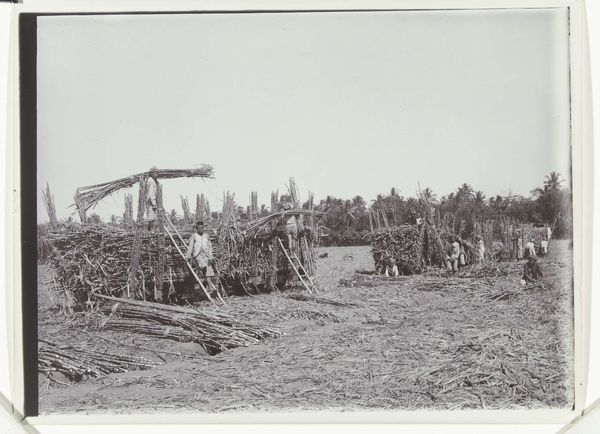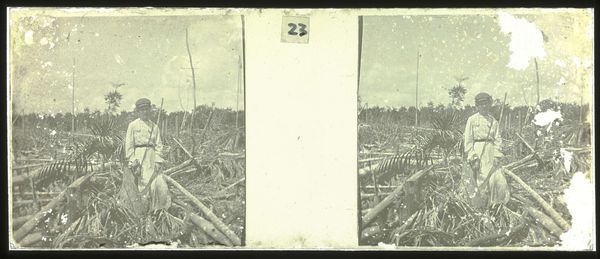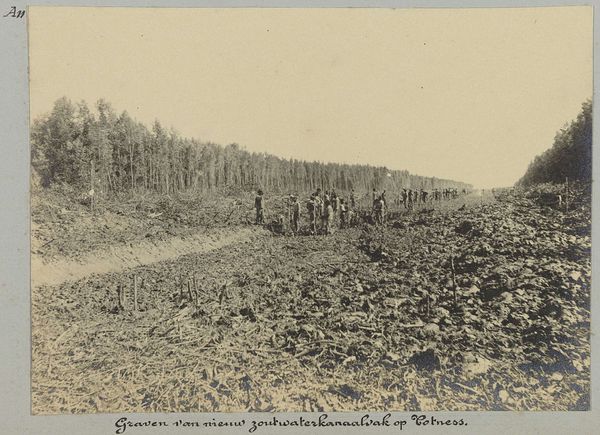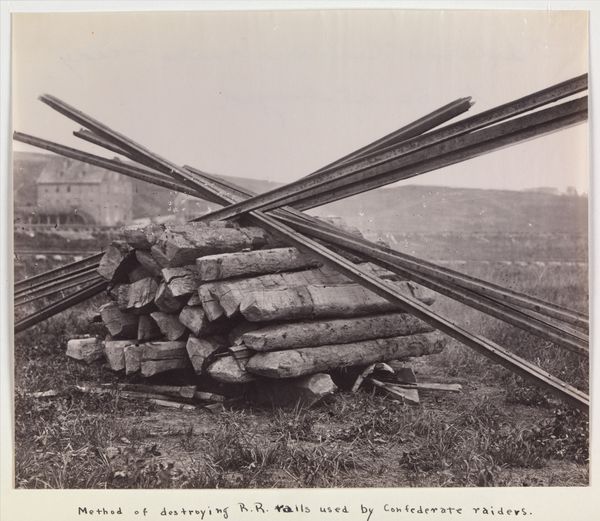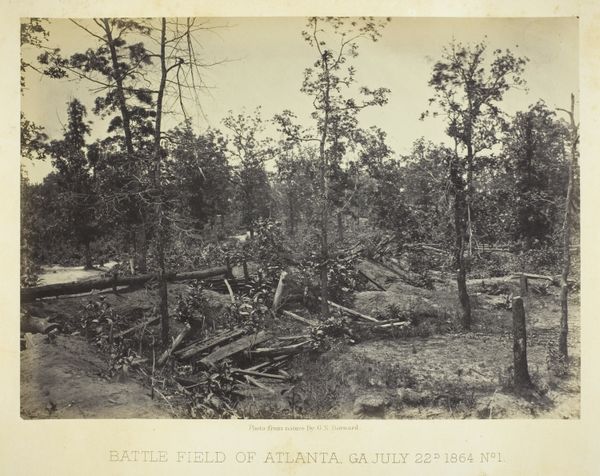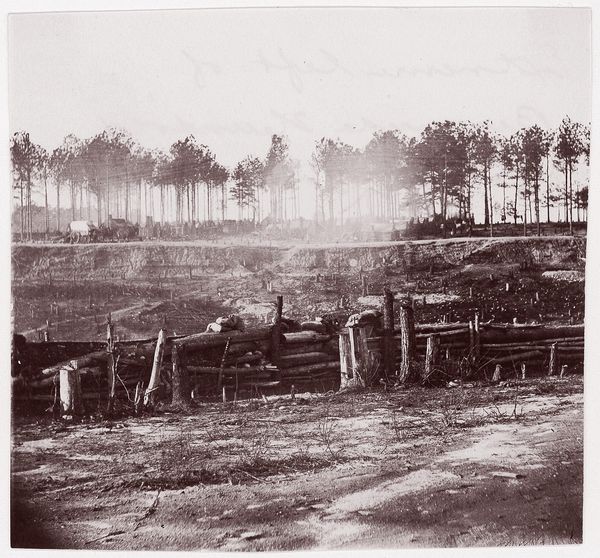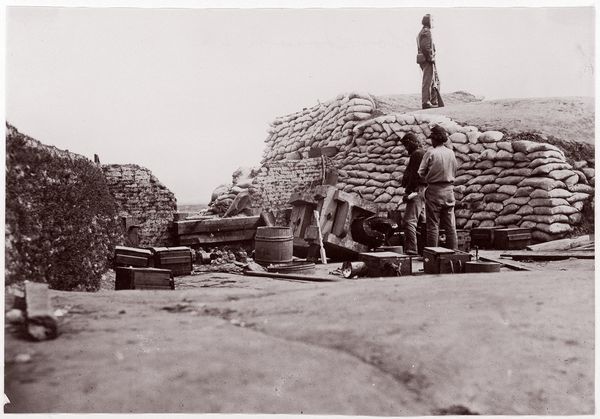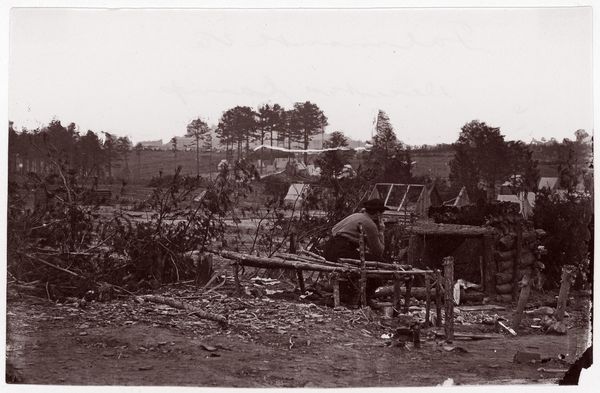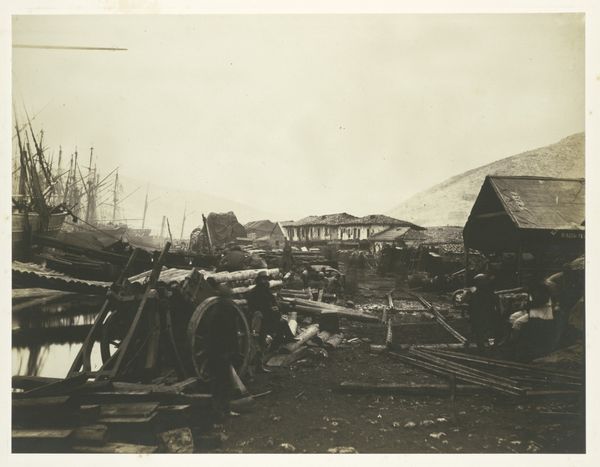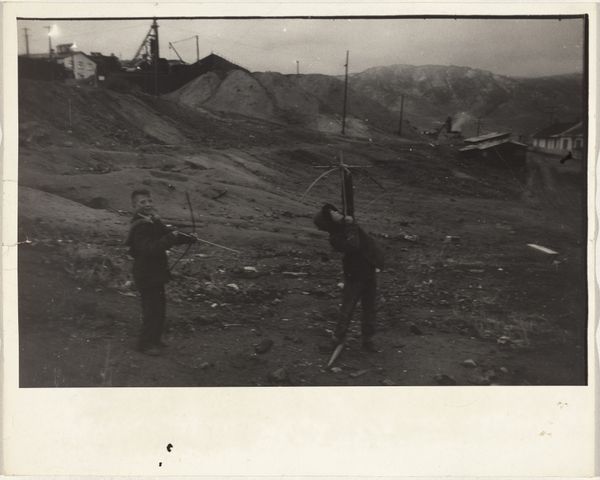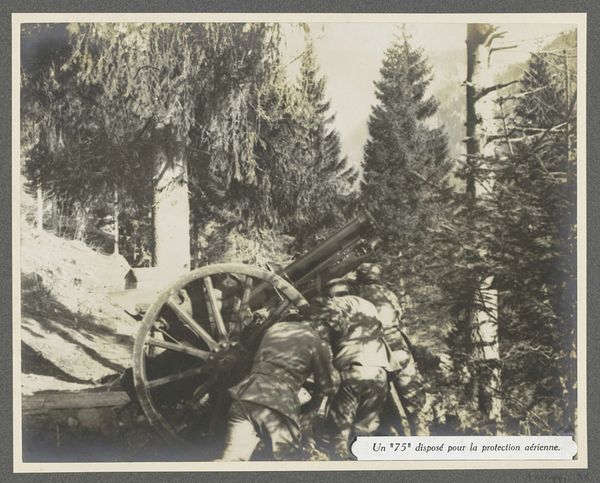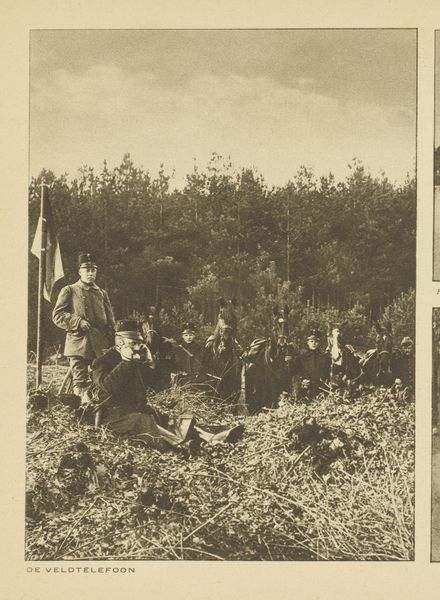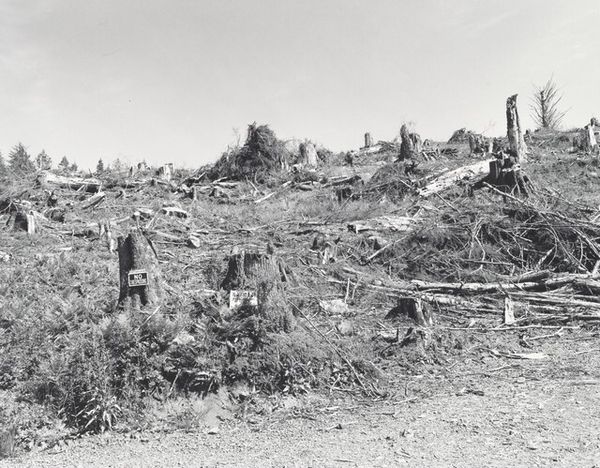
#
repetition of black
#
monotone colours
#
lack of colours
#
monochrome colours
#
desaturated colour
#
unrealistic statue
#
carved into stone
#
dark shape
#
repetition of black colour
#
statue
Dimensions: height 145 mm, width 141 mm
Copyright: Rijks Museum: Open Domain
Curator: Willem van de Poll’s stark image, “Het verzamelkamp te Soest,” captured in 1945 and held in the Rijksmuseum collection, shows the chilling aftermath of war. It’s quite striking, isn't it? Editor: Yes, a black and white photograph with this immense pile of discarded weapons and that sign…It hits you viscerally. The sign that says “Gewehere and Bajonette”, meaning rifles and bayonets, almost feels sarcastic. Curator: I feel that. It’s as if Van de Poll intends it that way. Look at how the rifles create a mountain of cold steel. There are some standing Allied soldiers in the distance almost appearing lost in this field. I find the bear icon slightly chilling too…it hints at an underlying national power lurking beyond the message itself. Editor: Exactly. The mountain of weaponry represents not just the end of fighting, but also the scale of destruction, the sheer volume of instruments of death cast off so casually into one enormous pile. Curator: It feels profoundly unsettling, like staring into the abyss. As an artist, the visual language really intrigues me. The way light plays with the textures of wood and metal, casting these almost ghostly shadows, makes the picture really alive with pain. What sort of cultural baggage do you suppose viewers at the time brought with them as they approached this artwork? Editor: I would venture to guess the imagery reminded folks in 1945 of something like collective trauma. Symbolically, a heap like that is like a mass grave—objects stand in for individuals. People were emerging from hiding and encountering new forms of grief. It is likely they might associate discarded firearms with loss and death in an especially powerful manner, with war still fresh in their memory. Curator: Right, that discarded feeling seeps into everything… almost like the soul of what was lost is imprinted there. And now, we view it through a slightly different lens, the historical context giving it an added weight, the symbolism resonating with our current anxieties. Editor: Absolutely, and for those contemporary audiences the iconography is equally strong, echoing similar visual representations of loss, power, and conflict across history. The pile, the weapons, the suggestion of a nation's former identity with the bear symbol, continue to carry a potent message. Curator: Indeed. Thanks for illuminating that so well, I had noticed some elements you described, but the overall feeling from the sum of its parts seems different now. Editor: It’s been a pleasure to unpack those layers with you!
Comments
No comments
Be the first to comment and join the conversation on the ultimate creative platform.
